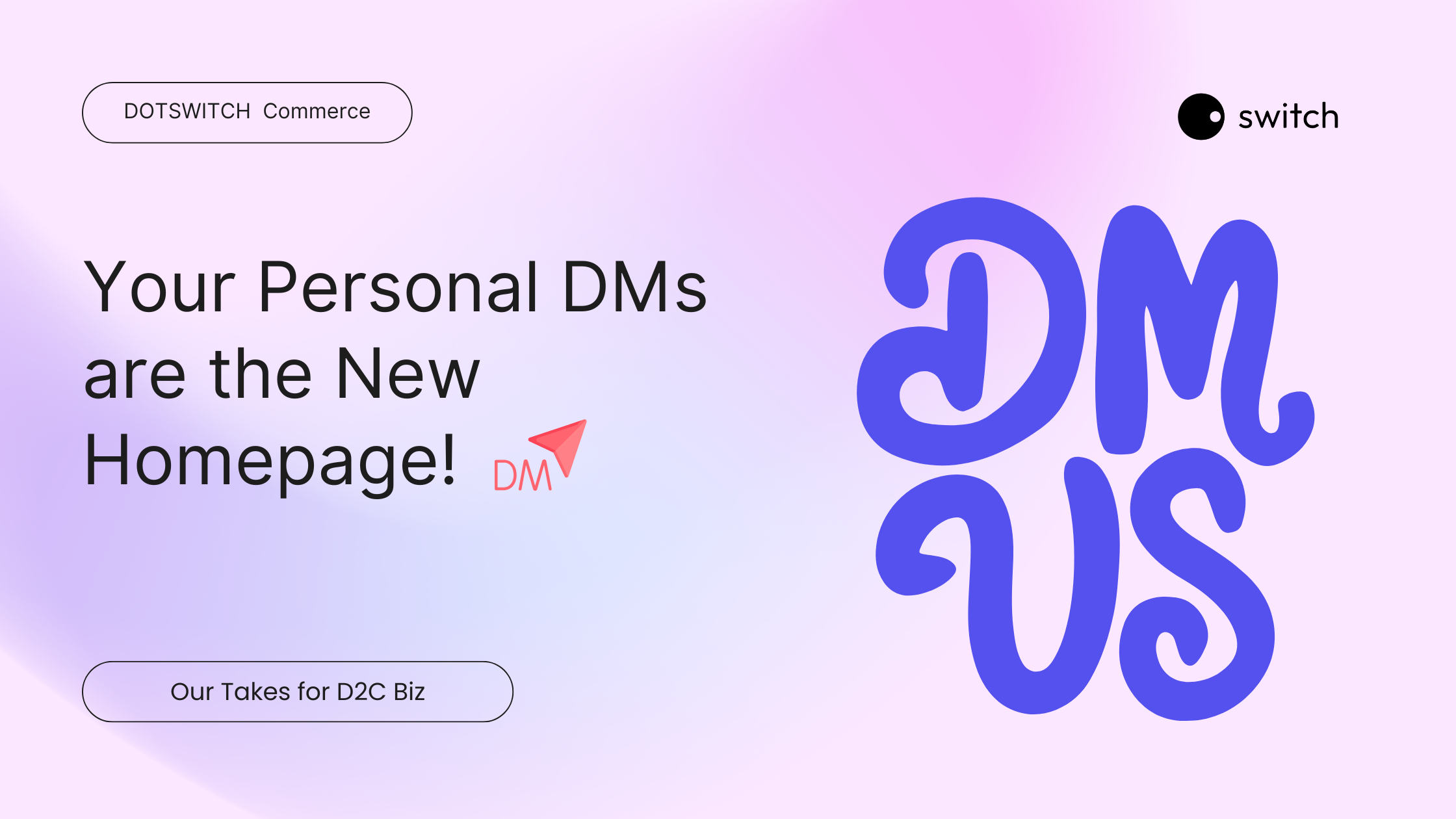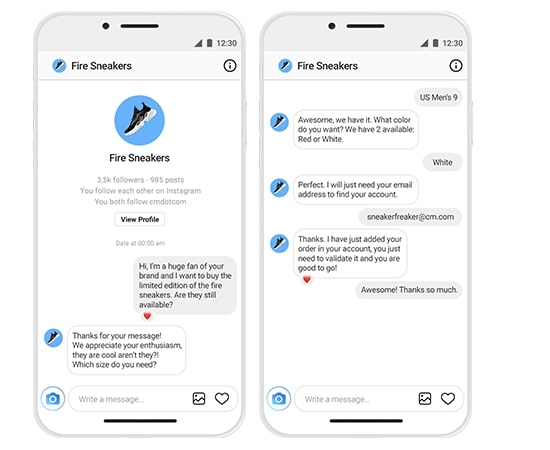The CX Revolution
DMs Are the New Homepage
How D2C Brands Are Redefining Customer Experience Inside Chat Apps

Recently, brands have been sliding into our personal spaces. Our DMs, our very secret hideouts that we once owned. Whether you consider it malicious or not, it's just a routine rule where consumers try to hide from the obvious ads and try to build anonymous spaces, and brands try to figure out how to encroach them. Once upon a time, brand homepages was where the magic happened.
Now? It’s the “Hi!” you send in someone’s inbox.
Scroll through any D2C founder’s day — product drops, customer queries, order follow-ups, discount codes — everything’s happening inside chats, not on websites. Welcome to the new CX playground: the DM.
The Great DM-CX Migration
We used to obsess over pixels. Now we obsess over typing indicators. Your customer doesn’t want to visit your brand; they want to message it.
Why? Because messaging feels personal, fast, and low-stakes. There’s no “commitment anxiety” of clicking through pages or logging into an account. Think about it — when a shopper DMs your brand on Instagram or pings you on WhatsApp, they’re not looking for a brochure. They’re expecting a conversation. They want to ask, “Will this shade suit me?”, “Can I exchange later?”, or “What’s the best-seller right now?” — all before they buy. And that’s the magic of it: chats feel human again.

The Old CX Problem: Efficient, but Cold
For years, e-commerce was built like a highway — big banners, product grids, and checkout tolls. It was virtual digitisation without any essence of human intent. But that has changed over the past 2 years. We are seeing brands trying to mimic from being third person to literally becoming first person. Everytime you feel angry or happy about a brand, think about how often you refer to them as a literal human being.
Every D2C brand set up a Shopify store, plugged in a CRM, and waited for conversions. But the problem? Customers stopped feeling seen. Every website started looking the same. Every product page followed the same “hero image + buy now + reviews” format. And every abandoned cart email sounded like it came from the same robot. The irony: brands kept spending on UX makeovers, while customers just wanted to talk to someone.
Welcome to the DM Economy
Then came WhatsApp. Instagram DMs. Telegram. Even Messenger 2.0. Places where your customers were already hanging out — sending memes, voice notes, and plans. Suddenly, commerce slipped into the chat window.
Now, you can browse a catalog, make a payment, and get delivery updates without leaving the chat. And the best part? It feels like a conversation, not a transaction.
In India, WhatsApp Commerce is exploding — think Gupshup, Interakt, QuickReply, Zoko — tools that turn conversations into conversions. In the Middle East, Instagram DMs and Arabic-language WhatsApp flows are driving up to 35% of D2C orders for boutique brands. So yes — your homepage might still be beautiful, but your DM inbox? That’s where the action is.
⚡ Why This Shift Is Happening
Familiarity & Trust
People trust a WhatsApp message more than a pop-up. It's where they talk to friends, not where they get spammed.
Zero Friction
No login walls, no cart abandonment. It’s one tap and a chat, with seamless payments built-in.
1-to-1 at Scale
Smart AI flows reply instantly, while letting a human take over when things get real.
How Smart Brands Are Reimagining CX Inside Chats
The biggest mistake brands make? Treating chat like email. You can’t copy-paste templates and call it “personalized CX.” Chat is performative — it’s about tone, rhythm, and empathy. Here’s what leading D2C brands are doing differently:
- Tone: Conversational, not corporate. “Hey 👋 got your size right here” works better than “Dear Customer, thank you for your inquiry.”
- Flow: Visual cards, buttons, quick replies. Chat UX is now a mini UI.
- Empathy: Knowing when to stop pushing. A gentle pause or emoji can do more than a 10% discount.
Some brands even use chat storytelling — like launching a new collection as a narrative series over WhatsApp messages. Imagine a “Day 1: Fabric Sneak Peek” → “Day 2: Moodboard Drop” → “Day 3: Shop Now” experience. That’s not marketing; that’s serialized brand intimacy.
💡 The New CX Playbook
Automate the Hello, Humanize the Wow.
Automation Layer (Efficiency)
- Instant replies for FAQs
- Personalized product suggestions
- Time-based re-engagement
Human Layer (Emotion)
- Real people for styling advice
- Empathetic replies during escalations
- Brand voice that sounds like a friend
🌈 The Future: Websites Become Showrooms, Chats Become Stores
In the next wave of D2C, websites will exist more for discovery and branding, not sales. Your “Buy Now” moment might happen inside a chat, not on your PDP. That changes everything:
- Data models: You’ll track “conversation depth” instead of “page views.”
- Design: Your chat UX becomes as important as your website UI.
- Retention: Relationships will live in recurring DMs, not remarketing ads.
For D2C founders, this is actually liberating — you don’t need to fight the algorithm anymore. You just need to show up and talk.
.png)